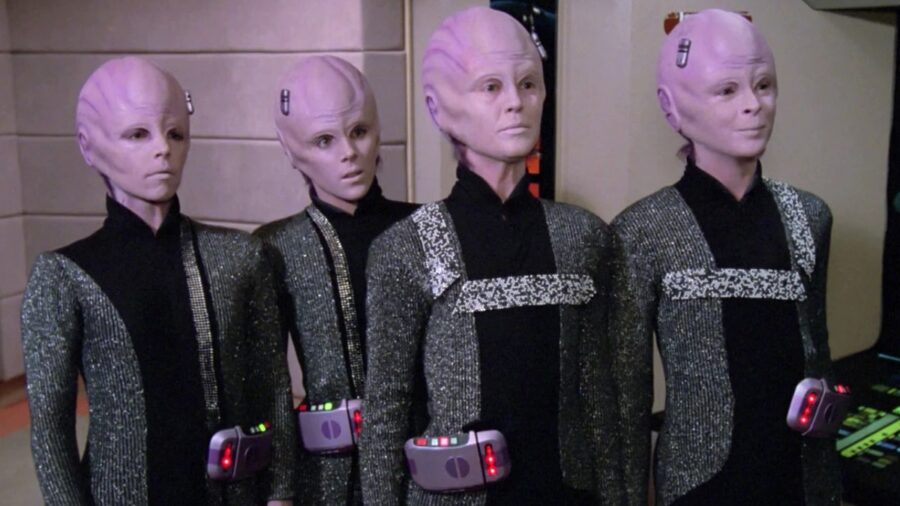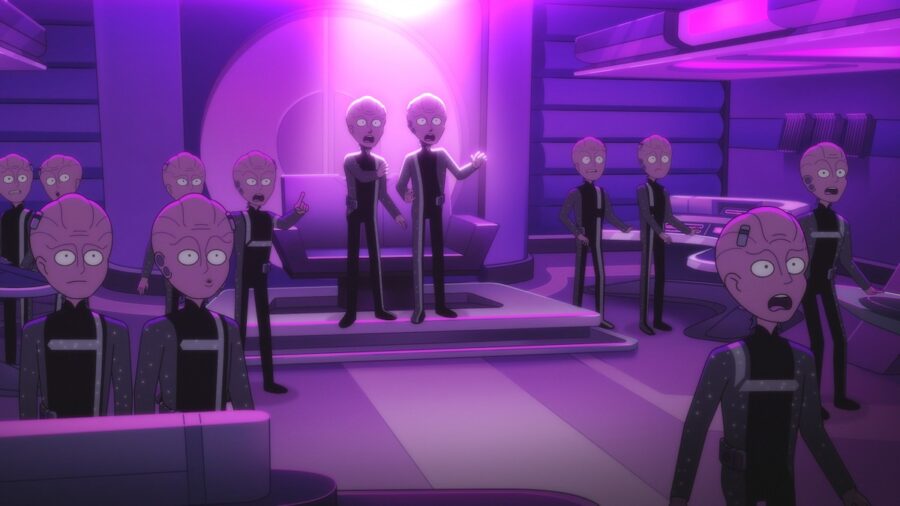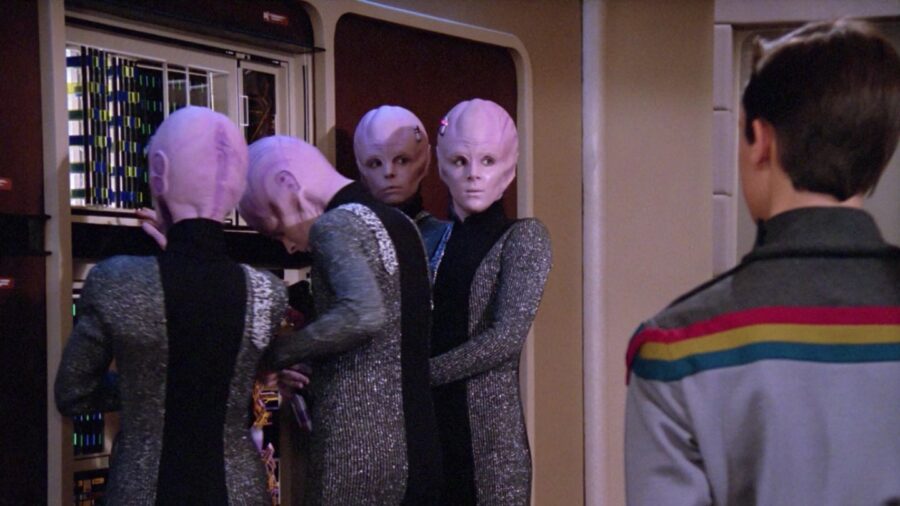Who Are Star Trek’s Bynar? The Cybernetically Enhanced Aliens Explained

There are plenty of great reasons to watch the Star Trek spinoff Lower Decks, and one of our personal favorites is how the show will bring back alien races that we thought we’d never see again. For example, this animated show has given us two different glimpses the Bynar, a mysterious race that we haven’t seen gotten a good look at since the first season of Star Trek: The Next Generation. Despite having such little screen time, these are some of the most fascinating (as a certain Vulcan might say) aliens in Star Trek, and we’re here to explain everything you need to know about the Bynar.
The Bynar hadn’t been seen since the first season of Star Trek: The Next Generation until Lower Decks brought them back.
Visually, the most striking thing about the Bynar is their bald heads and purple skin. Since the days of Star Trek: The Original Series, the Paramount franchise has often been guilty of just putting one or two things on an actor’s forehead and claiming they are an exotic alien. But the Bynar, with their bald heads and light purple skin, certainly seem like they are from a very distant world in Star Trek’s famous “final frontier.”
The Bynar have other interesting physical details, including asymmetrical ears as well as purple hair on the sides of their head (the remaster of The Next Generation from a few years back can help you see this). More interestingly, it seems that the adult Bynars that we see may have had at least some of their physiology altered at a young age. For example, in the Enterprise episode “Regeneration,” we learn that Bynar surgeons remove the parietal lobes of newborns in order to replace them with synaptic processors, and those processors are a major part of Bynars’ daily life and culture.

Those synaptic processors help connect these exotic aliens to their planet’s master computer. As we learn in the Star Trek: The Next Generation episode “11001001,” Bynars’ relationship with that computer is so intimate that it leads the aliens to communicate using binary code. Furthermore, the binary nature of how the Bynars communicate with one another is also reflected in the rest of their wider culture and lifestyle.
In that same Star Trek episode, we discover that the Bynars both live and work in pairs, and each Bynar’s partner serves as their mirror image in multiple ways. For example, each pair has matching ears on the opposite sides of his head, and each pair wears clothing where certain lines and other visual details appear on the opposite side for each counterpart. To make them seem even more like the most obnoxious couples you’ve ever met, these alien pairs often finish each other’s sentences when communicating in English.
Bynar Communication Is Unlike Any Other Species In Star Trek

Speaking of communication, these aliens have a more complex way of communicating than other Star Trek aliens. They effectively transmit large amounts of information when speaking in their native language, and Bynars need to carry around buffers (those metallic devices strapped to their hips) in order to manage the astounding amount of information coming in. Their culture may look weird from the outside, but it carries a number of benefits…and, as the Bynar eventually discovery, some major drawbacks.
The Bynar aren’t evil, but due to their binary way of thinking, they are often misunderstood.
In the Star Trek: The Next Generation episode “11001001,” these aliens find out that a supernova near their system had generated an electromagnetic pulse that threatened to wipe out all of the data on the Bynars’ planetary computer. To solve the problem, the aliens (who had been hired by Starfleet to update ships’ computer systems) deactivated their planetary computer to safely transfer its vital information to the Enterprise, which they would later use to restore their own computer. Unfortunately, they didn’t ask Captain Picard for permission to do so, and he and Riker nearly self-destruct the ship before realizing what the Bynars are up to.
It turns out the Bynars on the ship weren’t evil, but the binary nature of their thinking meant they were afraid to ask Picard for permission because getting a negative response could effectively destroy their entire way of life. They were worried that the Starfleet officers would say “no,” leaving a bemused Riker to explain, “there was a very good chance we would have said yes.” Fortunately, Picard decides that no permanent harm has been done and treats the incident much like fans treated the episode: as a way of learning more about one of the most fascinating types of aliens that Starfleet has ever encountered.












